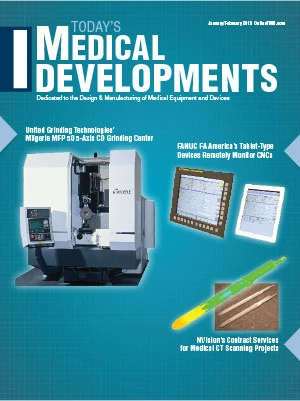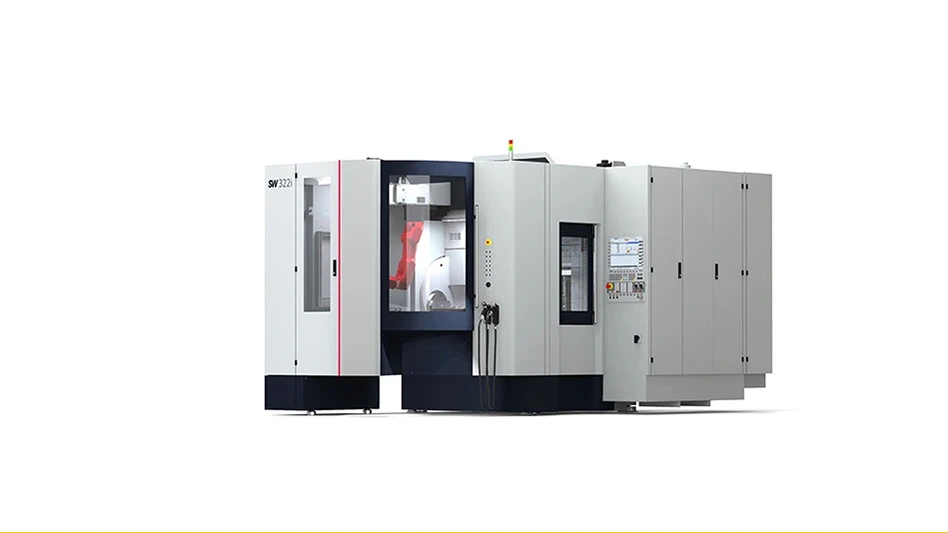 (During Insertion) The NovaCath Integrated IV Catheter System integrates the safety feature, stabilization technology, extension tubing, dual-vented flash chambers, and multi-access flow control clamp for ease of use and safety. (During Insertion) The NovaCath Integrated IV Catheter System integrates the safety feature, stabilization technology, extension tubing, dual-vented flash chambers, and multi-access flow control clamp for ease of use and safety. |
The term innovation is all too often associated with market leading technology companies like Apple, Microsoft, Facebook, and Google. Although these companies might employ innovative practices and have significant resources to pursue such initiatives, the fact is, much of today’s innovation comes from individual entrepreneurs and small start-ups. Medical device innovation is no exception.
Tangent Medical, Ann Arbor, MI, recently gained FDA clearance on the NovaCath Integrated IV Catheter system, a short-peripheral IV catheter, and plans to enter the U.S. market in the first quarter of 2013. The commercialization of this novel, closed IV catheter system will place it in direct competition with three large medical device manufacturers in a true oligopoly. In just 40 months, Tangent Medical has evolved from having early product concepts, to being a venture-backed company, to having a highly differentiated commercial product further reinforcing that entrepreneurs and starts-ups play a critical role in medical device innovation. More importantly, it demonstrates that with the right product and the right business fundamentals, even a small company can challenge market leaders.
From Humble Beginnings
In 2008, the University of Michigan’s Medical Innovation Center (MIC), Ann Arbor, MI, was entering its first year in existence, and had selected five fellows with a broad base of educational backgrounds and experience. As a member of this inaugural class, I was fortunate enough to have the opportunity to immerse myself into this three-phase curriculum that provided extensive knowledge on best practices in innovation, granted access to in-depth clinical immersion to identify unmet customer needs, and was guided through the process of evaluating things like technical feasibility and market potential for innovative concepts. Ultimately, it was the extensive clinical immersion and in-depth research of key stakeholders that lead to the final product concepts and decision to pursue the short-peripheral IV catheter market.
On the Road to an Underserved Market
During clinical immersion, the team identified more than 100 different product areas or clinical procedures that appeared ripe for disruptive technology and worthy of consideration. The team honed in on the practice of IV therapy and short-peripheral IV catheters, based on the size of the market and the knowledge that it was a largely under-served market. The focus was on the most commonly performed invasive procedure in healthcare today, through routine observation of sub-optimal clinical outcomes and patient experiences. The data showed that about 50% of all short peripheral IV catheters were experiencing complications, which negatively affected clinical outcomes, quality of care, and patient satisfaction.
 (After Insertion) NovaCath’s novel design preserves catheter integrity by minimizing catheter movement and dislodgement. The internal 180° fluid path turn eliminates the need for an external J-Loop. (After Insertion) NovaCath’s novel design preserves catheter integrity by minimizing catheter movement and dislodgement. The internal 180° fluid path turn eliminates the need for an external J-Loop. |
The problem and solutions were clear – the path forward was not. As the team moved into concept development it realized the importance of creativity, determination, and perseverance. Challenging the dreams of developing a break-through medical technology were patents, design challenges, material availability, and complex manufacturing hurdles. However, the shortcomings in current IV catheter products, the sub-optimal patient outcomes, and a medical segment that has treated innovation as more evolutionary, rather than revolutionary, kept the team moving forward.
Evolutionary to Revolutionary
The advent of the modern short-peripheral IV catheter began in the late 1950s. For the most part, the early design of the IV catheter consisted of an over the needle catheter and hard plastic cylindrical hub used to connect external IV therapy components. Since that time, there have only been a few fundamental changes in design, most notably, the advent of softer, more flexible catheter materials and the development of safety-engineered technology to prevent needlestick injuries. The irony lies in the fact that the same manufacturers that developed the market have largely controlled the pace of innovation and have left the market largely underserved and ripe for innovation. Overshadowing new product development and innovation was profit maximization, not uncharacteristic in this type of market.
George Kneller is known in the innovation and creativity circles for saying, “Creativity, as has been said, consists largely of rearranging what we know in order to find out what we do not know. Hence, to think creatively, we must be able to look afresh at what we normally take for granted.”
Therefore, the design team wiped the slate clean, imagining a patient on one side, a bag of fluid on the other side, and a black box in the middle. Then, starting with this, the team asked, “If we knew nothing about IV catheters, how do you get this fluid into the patient in a way that is comfortable, stable, consistent, and easier on the clinician?”
In doing so, the team identified four major issues that drove the majority of the product design:
Short-Peripheral IV Catheter Failures: More than 350 million PIV catheters, are sold annually in the United States, with about 50% of these developing complications, often requiring replacement before therapy is completed. Poor IV catheter stabilization and the use of add-on J-loops is the root cause of many of these failures.
Occupational Exposure to Blood: On a daily basis, healthcare workers face the risk of occupational exposure to blood through needlesticks, blood splatter, and blood leakage from devices. Although there has been tremendous progress in the U.S. market with needlestick prevention, minimizing occupational exposures to blood splatter and leakage has been largely unaddressed with short peripheral IV catheters.
Variation in Clinical Practice: The practice of preparing an IV catheter for insertion required many components, many steps, and significant variation in the handling of the procedure. Clinicians struggled to standardize on best clinical practices based on the lack of available technology, sub-standard technology, or inconsistencies in deployment of these technologies.
Patient Safety & Comfort: The practice of inserting, securing, and maintaining an IV catheter can be difficult, posing a risk to patient safety and satisfaction. Routinely ranked as one of the top five complaints on patient satisfaction surveys is IV therapy. Whether it is the hard cylindrical hub that rests on the patient’s skin, the use of strong adhesives or tape on sensitive skin, accidental catheter dislodgement, or IV catheter restart, there was significant room for improvement.
 The first and only FDA cleared safety catheter that uniquely integrates advanced catheter stabilization, next generation tubing management, passive needle encapsulation, and blood control on every short-peripheral IV start. The first and only FDA cleared safety catheter that uniquely integrates advanced catheter stabilization, next generation tubing management, passive needle encapsulation, and blood control on every short-peripheral IV start. |
So, with all this knowledge, the team members set their eyes on developing a closed IV catheter system that integrated IV catheter stabilization, reduced risk of occupational exposure to blood and improved patient comfort while exceeding the highest standards of OSHA, CDC, and INS standards for patient safety, healthcare worker safety, and clinical best practices. This is where the design, the manufacturing, and the methods really came into play.
Breaking Though Barriers
The Tangent Medical team concluded that developing an innovative closed IV catheter would require developing and integrating multiple design innovations into a single, comprehensive solution to address the majority of unmet customer needs while eliminating the need for add-on products. The development of the NovaCath Integrated IV Catheter System occurred in remarkably little time, with minimal resources, and with tremendous success. However, success has not been without challenge. In fact, at times the team questioned if successful navigation of the challenges could result in development of a commercial product. Fortunately, determination and perseverance prevailed, overcoming the following challenges and subsequent successes:
 (After Insertion) A unique, built-in stabilization feature provides 360° of advanced stabilization while eliminating the problematic J-Loop. (After Insertion) A unique, built-in stabilization feature provides 360° of advanced stabilization while eliminating the problematic J-Loop. |
Intellectual Property (IP): The first challenge faced was the extensive and extremely complex IP landscape. Fortunately, the support of a patent attorney from the start helped guide the thought process of where thoughts could not go. On the other hand, the team also found creative new design elements, which allowed work in spaces that previously might not have been pursued.
Ergonomics and Device Size: Knowing that changes to clinical practice were a barrier to adoption and device size could limit adoption for certain patient types (newborns to adults) and patient sites (hand, arm, scalp), the team developed enabling technologies (180° internal fluid path and 360° stabilization frame) to allow the integration of multiple feature sets into the device without compromising clinician or patient satisfaction.
Cannot Be Done
People that want to design cool innovative parts do not necessarily know the rules of injection molding. In order for the engineers to suspend disbelief, maintain an open mind, and develop creative new designs, the team needed to find vendors with similar mindsets. All too often, the easy response was to say, that is not possible. However, there was the determination to find the right mix of open-minded vendors to answer that it is possible.
180° Fluid Path Turn
Next was the intense focus on changing history and following the historical design of a straight fluid path. Even knowing that the internal re-direct of the fluid path would add tremendous complexity and cost to the molded parts, it was essential to the design of the product. Ingenuity in this area provided a fundamental change to the course of IV catheter history, allowing integration of advanced catheter stabilization and elimination of the need, or use of, an external J-Loop – all fundamental customer needs existing for more than 50 years.
Over-Molded Hub: Integrating known market and customer requirements into an integrated design that uniquely serves both the clinician and patient alike, was complex. The engineers faced the need for molded parts that were soft and pliable enough for patient comfort and integration of a flexible, 360° stabilization frame while also providing the rigidity of critical components to support manufacturability and overall product robustness. The need to over-mold a rigid plastic component with a patient friendly soft material, at reasonable component cost was not an easy undertaking. This was especially true when factoring in the need for certain parts to be translucent, others opaque, and the majority colored to support a clinician’s use of colors in order to distinguish catheter types.
 Passive needle encapsulation and closed system blood control minimizes occupational blood exposure to the lowest feasible extent. Passive needle encapsulation and closed system blood control minimizes occupational blood exposure to the lowest feasible extent. |
Design for Manufacturability: Developing a breakthrough product design and design for manufacturability do not always align. Quickly, the engineers found a struggle with not only part complexity but also the overall number of components required to manufacture the design. With the help of many outside vendors and consultants, a considerable amount of work went into improving the design using fewer, less complex components.
Setting New Standards
By pushing the limits of abilities and standards in the industry, there was resistance along the way. However, the design team at Tangent Medical successfully developed a product that looks to set new standards in IV catheter design, functionality, and performance. Recent customer experiences at the Infusion Nurses Society (INS), Association for Vascular Access (AVA), and Emergency Nursing Association (ENA) meetings have been nothing less than remarkable and only validated the belief in the company tagline: Innovate. Inspire. Infuse.
The overwhelming positive feedback and response of clinicians, and the industry at large continues to inspire the team. Every time a market leading company or customer asks, “Why did we not think of that,” the team cannot help but to smile and be glad they did.
Tangent Medical Technologies
Ann Arbor, MI
www.tangentmedical.com
Watch a video about the NovaCath Integrated IV Catheter System at www.tangentmedical.com/video.

Explore the January February 2013 Issue
Check out more from this issue and find your next story to read.
Latest from Today's Medical Developments
- Tariffs threaten small business growth, increase costs across industries
- Feed your brain on your lunch break at our upcoming Lunch + Learn!
- Robotics action plan for Europe
- Maximize your First Article Inspection efficiency and accuracy
- UPM Additive rebrands to UPM Advanced
- Master Bond’s LED415DC90Med dual-curable adhesive
- Minalex celebrates 60 years of excellence in miniature aluminum extrusions
- Tormach’s Chip Conveyor Kit for the 1500MX CNC Mill





